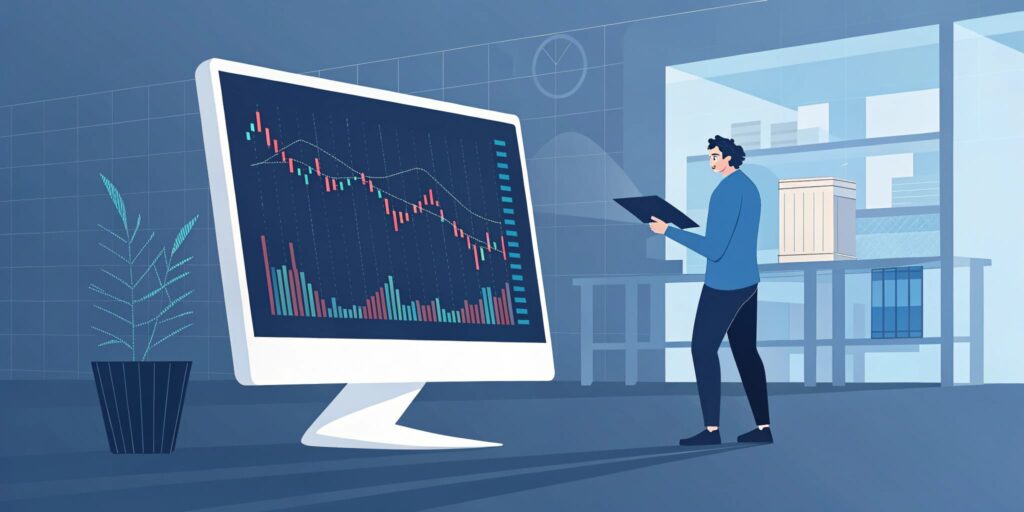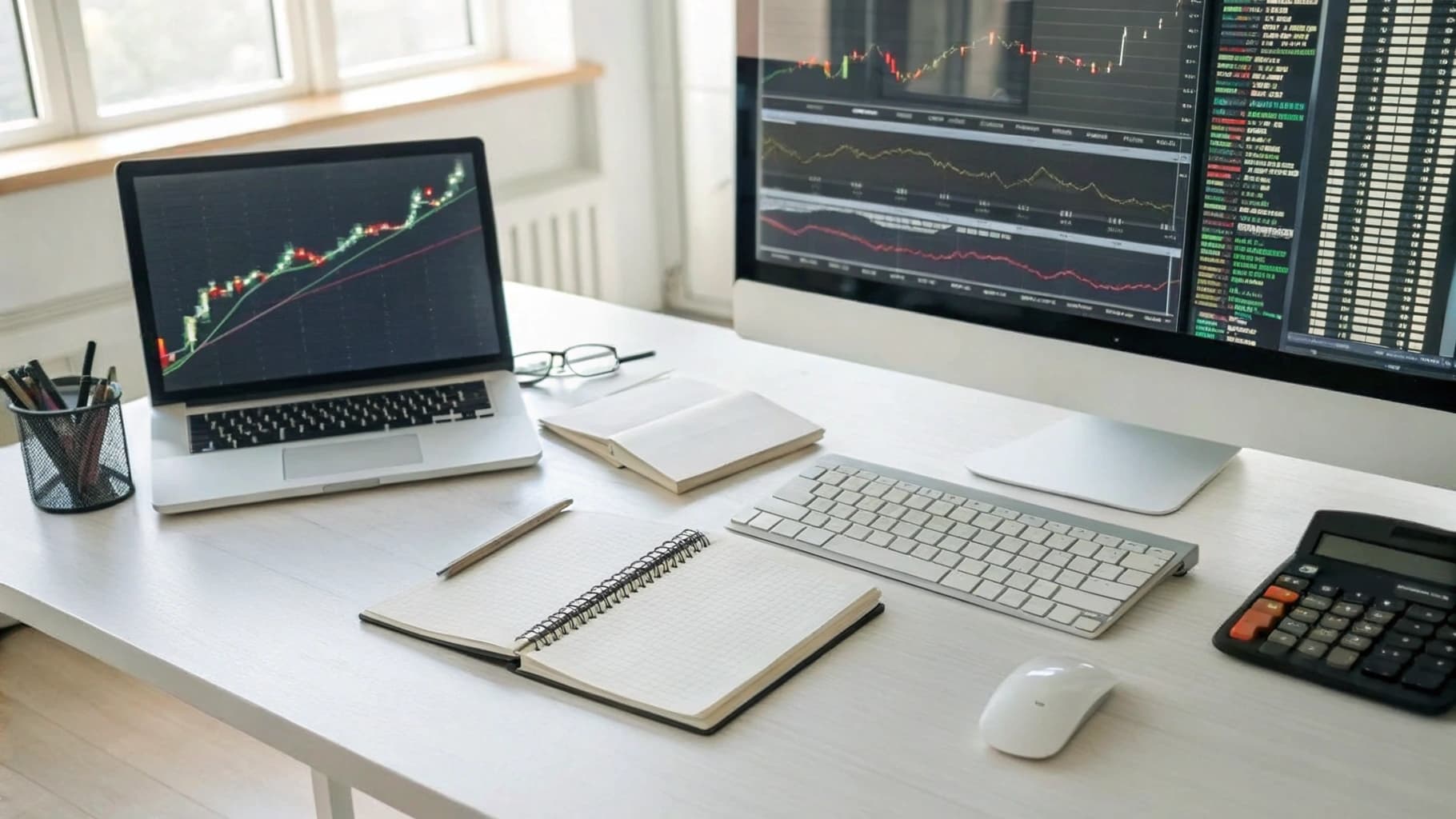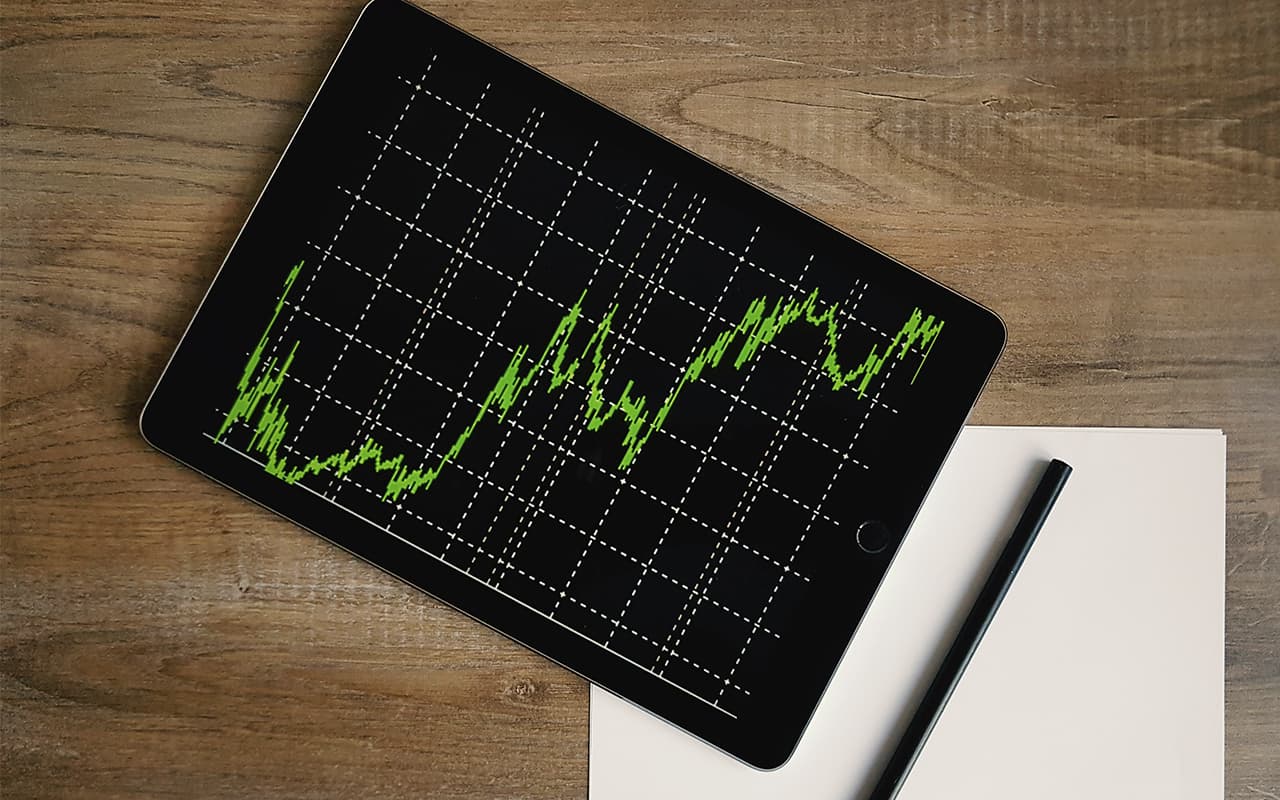Success in trading demands more than market knowledge. A well-organized workspace enhances decision-making and execution speed. This article explores essential components for creating an effective trading environment.
Professional traders understand that their workspace directly impacts performance. Every second counts in volatile markets. The right setup can mean the difference between capturing opportunities and missing them entirely.
Your trading workspace should evolve with your experience level. Beginners need different tools than seasoned professionals. Budget constraints also shape these decisions.
Jason Heaton, co-founder of the Statistics AI Solver tool, emphasizes this point: “A trader’s workspace is their command center. Start with essentials and upgrade based on actual needs, not perceived requirements. I’ve seen traders with $10,000 setups fail while others succeed with basic configurations. Focus on reliability and speed over aesthetics.”
Hardware Essentials

Computer Specifications
Your computer forms the backbone of your trading operation. Processing power affects platform performance and order execution speed.
Minimum Requirements:
- Intel i5 or AMD Ryzen 5 processor
- 8GB RAM
- 256GB SSD storage
- Dedicated graphics card (for multiple monitors)
Recommended Specifications:
- Intel i7/i9 or AMD Ryzen 7/9 processor
- 16-32GB RAM
- 512GB+ NVMe SSD
- Mid-range graphics card supporting 4+ monitors
Monitor Configuration
| Setup Type | Number of Monitors | Best For | Approximate Cost |
| Basic | 1-2 | Day traders, beginners | $200-500 |
| Intermediate | 3-4 | Active traders, multi-asset | $600-1,200 |
| Professional | 6+ | Institutional, high-frequency | $1,500+ |
Multiple monitors increase efficiency. Traders can simultaneously view charts, news feeds, and order entry screens. Position monitors at eye level to reduce neck strain.
Essential Peripherals
Quality peripherals enhance trading efficiency:
- Mechanical Keyboard
- Faster keystroke registration
- Programmable hotkeys
- Durability for heavy use
- Gaming Mouse
- High DPI for precision
- Multiple programmable buttons
- Ergonomic design
- Uninterruptible Power Supply (UPS)
- Prevents data loss during outages
- Maintains internet connectivity
- Protects hardware from surges
Internet and Connectivity
Reliable internet connectivity is non-negotiable. Delays in data transmission directly impact trading results.
Speed Requirements:
- Minimum: 25 Mbps download, 5 Mbps upload
- Recommended: 100+ Mbps download, 20+ Mbps upload
- Latency: Under 50ms to broker servers
Always maintain a backup connection. Mobile hotspots provide emergency alternatives. Fiber optic connections offer superior reliability over cable.
Trading Software and Platforms

Platform Selection Criteria
Choose platforms based on your trading style and asset preferences. Consider these factors:
- Asset availability
- Commission structure
- Technical analysis tools
- API access for automation
- Mobile app quality
- Customer support responsiveness
Essential Software Tools
| Tool Category | Popular Options | Monthly Cost Range |
| Charting | TradingView, ThinkorSwim | $0-60 |
| News Feeds | Bloomberg, Benzinga Pro | $0-350 |
| Journaling | Edgewonk, TraderSync | $0-50 |
| Scanners | Trade Ideas, Finviz | $10-150 |
Additional Software Considerations:
- Economic calendar integration
- Position sizing calculators
- Risk management tools
- Backtesting capabilities
Physical Workspace Organization
Ergonomics prevent fatigue during long trading sessions. Proper setup reduces physical strain and maintains focus.
Desk Configuration Checklist:
- Adjustable height desk (sitting/standing options)
- Monitor arms for flexible positioning
- Cable management systems
- Adequate lighting (avoid glare)
- Document holders for reference materials
Keep frequently used items within arm’s reach. Minimize clutter to reduce distractions. A clean workspace promotes clear thinking.
Mobile and Remote Trading
Modern traders need flexibility. Mobile setups enable monitoring and execution from anywhere.
Mobile Essentials:
- Tablet with cellular connectivity
- Smartphone with trading apps
- Portable chargers
- Secure VPN service
Cloud synchronization keeps strategies and journals accessible across devices. However, avoid executing complex trades on mobile devices when possible.
Backup and Redundancy
System failures occur at the worst moments. Prepare contingency plans before problems arise.
Critical Backup Components:
- Secondary computer or laptop
- Alternative internet connection
- Mobile broker access
- Documented broker phone numbers
- Backup power solutions
Regular data backups protect trading journals and analysis. Use both local and cloud storage solutions.
Budget Progression Strategies
Start modestly and upgrade based on profitability:
Beginner Setup ($500-1,000):
- Basic computer meeting minimum specs
- Single 24″ monitor
- Standard keyboard and mouse
- Free charting platforms
Intermediate Setup ($1,500-3,000):
- Dedicated trading computer
- Dual 27″ monitors
- Mechanical keyboard
- Premium platform subscriptions
Professional Setup ($3,000+):
- High-performance workstation
- 4-6 monitor array
- Redundant systems
- Professional data feeds
Common Mistakes to Avoid
Many traders overspend before proving consistency. Avoid these pitfalls:
- Purchasing excessive monitors without need
- Ignoring ergonomics
- Skipping backup systems
- Choosing aesthetics over functionality
- Neglecting internet redundancy
Conclusion
Building an effective trading workspace requires thoughtful planning. Start with essentials and expand based on actual needs. Focus on reliability, speed, and ergonomics over impressive appearances.
Remember that successful trading depends more on discipline and strategy than expensive equipment. Create a workspace that supports your trading style and grows with your expertise.
Your workspace should enhance focus and efficiency. Regular evaluation ensures your setup continues meeting evolving needs. Begin with basics, prove consistency, then upgrade strategically.



